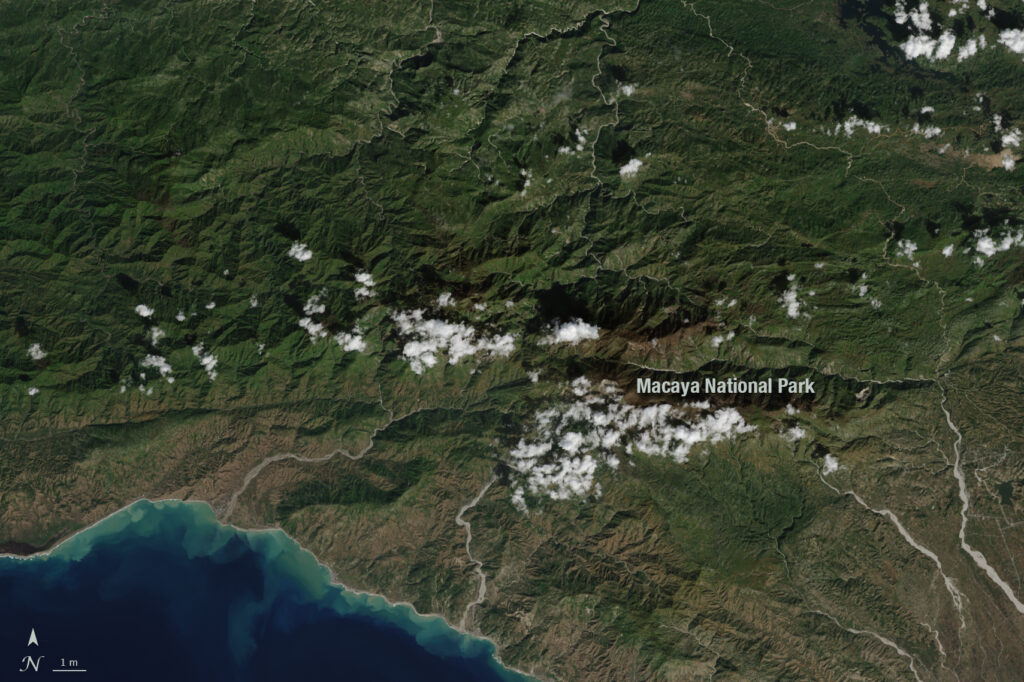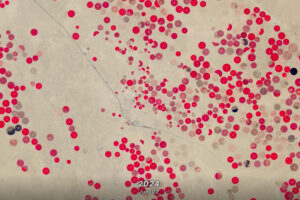By Chris Burns, NASA’s Goddard Space Flight Center
Wildfires are a powerful force, reshaping landscapes in hours. Landsat satellites have been tracking these fires for decades, helping scientists understand and manage wildfire risk, map burned areas, and monitor ecosystem recovery—all from space. Discover how Landsat data supports wildfire management, from spotting early fire risks to watching nature’s recovery. With climate change intensifying fires, Landsat remains a critical tool for safeguarding our planet.
Video credit: Chris Burns, NASA’s Goddard Space Flight Center
/// VIDEO SCRIPT ///
INTRO
Wildfires – one of nature’s most powerful forces, capable of reshaping entire landscapes in a matter of hours.
From the arid hills of California to the dense eucalyptus forests of the Australia, these intense blazes leave a trail of destruction, challenging firefighters, communities, and ecosystems alike.
But wildfires aren’t just about flames—they’re about the cycle of growth, destruction, and renewal.
Though wildfires are a natural part of many ecosystems, climate change has amplified their frequency and intensity the world over, emphasizing more than ever the importance of better understanding and managing wildfires.
For over 50 years, Landsat satellites have been capturing invaluable data, allowing us to track the health of vegetation, map burned area, and monitor recovery in burned regions.
So let’s explore the ways our guardian Landsat is used to monitor wildfires, from before the first spark to years after the flames have died out.
LANDSAT INSTRUMENTS
At the core of each Landsat satellite are its onboard sensors – the instruments that give them the ability to continuously scan Earth’s surface for wildfire activity.
Landsats 8 & 9, currently in orbit, are both equipped with the Operational Land Imager (OLI) and the Thermal Infrared Sensor (TIRS).
OLI captures detailed data across visible, near-infrared, and shortwave-infrared wavelengths, helping scientists assess the distribution, abundance and health of vegetation, and track changes in land cover— four factors crucial to understanding wildfire risk.
Healthy, hydrated vegetation is less likely to burn, whereas dry, stressed vegetation is essentially fuel waiting for a spark.
While OLI gives us a bird’s eye view of land cover and vegetation health, TIRS measures surface temperatures, critical for detecting heat anomalies, which can help spot fires as they start.
It’s this combination of OLI’s vegetation data and TIRS’ heat detection that allows Landsat to be such a powerful tool for wildfire management.
Landsat satellites onboard instruments coupled with their ability to revisit the same location every 8 days, provide consistent and reliable data, giving scientists tools to characterize the fire lifecycle, beginning before they ignite to well after they’ve been successfully snuffed.
FOREST FIRE FUEL MAPPING
One of the most effective ways to manage wildfires is through understanding and controlling the vegetation, or “fuel,” that powers them.
Vegetation that becomes dry or overgrown can act as tinder, intensifying fires when they ignite.
Landsat satellites play a crucial role in monitoring these fuel loads and helping fire managers reduce the risk of large, uncontrollable wildfires.
Fuel management strategies rely on accurate data about vegetation health, moisture levels, and structure, which can be gathered from spaceborne sensors.
Landsat’s multispectral capabilities allow scientists to assess various characteristics of vegetation across vast areas. With this data, they can classify vegetation into different “fuel types,” each with a different likelihood of burning.
Landsat imagery can show how vegetation changes over time, detecting areas that are becoming drier or denser.
For example, in fire-prone regions, fuel loads can be mapped to highlight areas where vegetation has become hazardous, providing information that can guide actions such as controlled burns or mechanical thinning.
As climate change continues to influence the behavior of wildfires, Landsat’s long-term, consistent data offers fire managers the crucial tools needed to safeguard forests, communities, and ecosystems from their destructive force.
ACTIVE FIRE DETECTION
Once a wildfire ignites, tracking its progression is critical for understanding its impact on ecosystems and landscapes.
Landsat’s ability to map burned areas has been a game-changer, allowing scientists to assess fire patterns more accurately than ever before.
A new approach developed by researchers uses dense time-series data from Landsat to create highly detailed maps of burned areas.
This method goes beyond simply spotting active fires—it reveals the true extent of burned land even after the flames have been extinguished.
The key to this innovation is an advanced algorithm that uses data from Landsat’s visible, infrared, and thermal bands to identify areas that have burned.
By comparing images from before and after the fire, the algorithm can detect changes in vegetation, soil, and surface heat, giving a precise picture of where the fire spread.
The result? A more accurate estimate of the total area burned—essential for fire management, recovery efforts, and studying the impacts of wildfires on the climate.
This new technique was applied across the United States, mapping burned areas dating back to 1984, identifying 36% more burned area than previous methods in key regions like the western U.S., where fires are most common.
With this improved understanding, scientists can better assess wildfire risks and plan for future fire events.
Landsat’s detailed burned-area maps not only help researchers understand how fires affect the landscape, but they also support long-term monitoring of fire-prone ecosystems, providing invaluable data for improving wildfire response strategies and protecting both natural and human environments.
MONITORING RECOVERY
The story doesn’t end once a wildfire’s flames have been quenched – in fact, it’s just beginning.
Despite the charred landscapes left behind a wildfire’s path, nature has a remarkable ability to recover—if we give it the chance.
This is where Landsat’s long-term data record really pays off,
helping scientists monitor this recovery process by providing detailed, consistent imagery that tracks how forests and ecosystems rebound from fire damage.
In 2019, a team of researchers used Landsat imagery to study the recovery of forests damaged by wildfire in western North America.
The study looked at 12 wildfires that occurred between 2000 and 2007 across three different forest types: ponderosa pine, mixed conifer, and conifer-oak-chaparral.
Using LandTrendr, a Landsat-based tool for analyzing changes in land cover over time, the researchers analyzed decades of Landsat imagery to track how these burned areas changed over time.
They focused on something called the Normalized Burn Ratio, or NBR, an index, calculated from Landsat’s infrared bands, sensitive to both burn severity and vegetation regrowth.
By observing how NBR changed year after year, the team could measure forest recovery rates.
The results showed that although forests are remarkably resilient, recovery takes time.
On average, five years after a fire, forests had recovered about 30 to 44% of their pre-fire vegetation cover.
After ten years, this increased to 47 to 72%, and by 13 years post-fire, recovery ranged from 54 to 77%.
As wildfires become more frequent and severe due to climate change, studies like this one are more important than ever, helping us understand how our forests might change in the future and how we can better manage and protect these vital ecosystems, all made possible by the continuous, reliable data provided by the Landsat program.
LANDSAT NEXT
While the current generation of Landsat satellites has revolutionized our ability to monitor wildfires, the future holds even more promise.
Landsat Next, scheduled to launch in the coming years, will push the boundaries of satellite technology even further
With improved spatial and temporal resolution, Landsat Next will provide more frequent observations of wildfire-prone regions.
And Landsat Next’s enhanced thermal imaging capabilities will allow for more precise temperature readings and be able to detect even smaller hotspots, providing earlier warnings for potential wildfires.
Landsat Next will also feature additional spectral bands, allowing for even more detailed analysis of vegetation health and fire damage.
Whether it’s predicting fire risk or monitoring recovery, Landsat Next has the potential to be a game-changer in wildfire management.
OUTRO
Wildfires are an inevitable part of many ecosystems, but with the right tools, we can better manage and mitigate their impacts.
For decades, the Landsat program has given us the power to monitor the Earth from above, providing invaluable data on fire risk, detection, and recovery.
As climate change evolves and wildfires will become an increasingly pressing global issue, the insights gained from Landsat will be more important than ever.
From predicting where the next fire might spark to watching nature’s incredible recovery unfold, Landsat stands guard in orbit, helping us better understand and protect our world.
Related Reading
+ Extreme Fire Seasons are Looming—Science Can Help Us Adapt; Nature Comments






